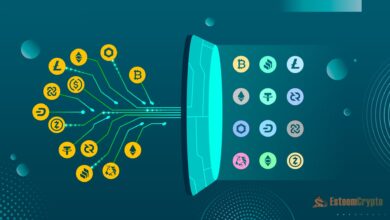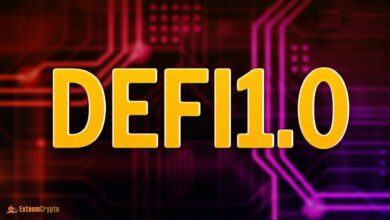DeFi Liquidity Mining: Challenges and Future Prospectus

DeFi Liquidity Mining: There has been a dramatic shift in the financial sector due to the advent of decentralized finance (DeFi), which has eliminated middlemen and created an entirely new ecosystem. Liquidity mining is a game-changing concept in decentralized finance (DeFi). The idea is that users can earn rewards, such as governance tokens or other crypto assets, by providing liquidity to protocols or decentralized exchanges (DEXs). Lending, trading, and other financial operations have been made possible by liquidity mining, which has been an essential part of the DeFi ecosystem since its start. Despite this, liquidity mining will encounter fresh obstacles and possibilities in 2024 due to the ever-changing DeFi ecosystem. Find out where DeFi liquidity mining stands right now, what obstacles it faces, and where it could go from here in this in-depth essay.
The Origins and Impact of Liquidity Mining
There was a surge in interest in liquidity mining in 2020, during the so-called “DeFi Summer,” when protocols such as Uniswap and Compound implemented reward mechanisms to encourage users to provide liquidity. The idea was simple: anyone could put their assets into a liquidity pool and get a cut of the trading fees and governance tokens that the pool made. A strong connection between users and the protocol was established when these tokens frequently offered holders voting powers in protocol governance.
Liquidity mining had an immediate and significant effect. Total value locked (TVL) in DeFi protocols skyrocketed, reaching billions of dollars in just a few months, because of this. Decentralized exchanges (DEXs) emerged as a serious contender to centralized exchanges (CEXs) due in large part to liquidity mining, which in turn pushed DeFi’s wider adoption.
The Current State of Liquidity Mining in 2024
As of 2024, liquidity mining remains a key feature of the DeFi ecosystem, but the landscape has matured significantly. Several trends have emerged:
Sustainability Concerns
The sustainability of early liquidity mining projects was frequently questioned. A “yield chasing” mindset developed as a result of the large payouts, in which users would swiftly transfer their assets between protocols to maximize earnings. Consequently, TVL would experience a surge before quickly falling as rewards were reduced, resulting in a boom-and-bust cycle. Many protocols have responded to this by adopting more sustainable models that provide less frequent but more stable incentives.
Innovative Reward Structures
By 2024, liquidity mining algorithms had advanced significantly. A few protocols have gone above and above by instituting tiered reward systems, time-locked incentives, and even NFT-based awards as a means of compensating liquidity providers. The reduction of volatility linked with short-term yield farming and the encouragement of long-term participation are the goals of these developments.
Cross-Chain Liquidity Mining
Liquidity mining has grown beyond Ethereum to encompass additional blockchains such as Binance Smart Chain, Avalanche, and Solana, thanks to the proliferation of multi-chain ecosystems. Users can earn rewards in numerous tokens by providing liquidity across several networks through cross-chain liquidity mining programs. This has made liquidity mining more complicated, but it also gives users additional options to spread their bets.
Regulatory Scrutiny
The increasing popularity of DeFi has piqued the interest of authorities throughout the globe. Particularly, liquidity mining has been the subject of investigation because of worries that it can enable illegal operations like money laundering. Some protocols have responded by instituting KYC and AML procedures, while others have shifted towards decentralized governance models to lessen the impact of regulatory issues.
The Rise of Liquidity Mining Aggregators
Users are relying on liquidity mining aggregators to help them navigate the ever-changing DeFi ecosystem. Users of these platforms can put their money into a central pool and have it spread out among many protocols to get the best possible return. Aggregators streamline processes and enable users to instantly spot the most lucrative prospects.
Challenges Facing Liquidity Mining
Despite its continued growth, liquidity mining faces several challenges that could impact its future:
Dilution of Token Value
Possible token value dilution is one of the biggest problems with liquidity mining. Token values may fall as protocols create more tokens to compensate liquidity providers. When the token’s use is restricted to governance, this has raised questions about the sustainability of certain liquidity mining operations in the long run.
Impermanent Loss
There is a chance of temporary loss for liquidity providers if the value of the assets in the pool drastically changes from when they were deposited. This may lead to a lesser return compared to keeping the assets separate from the pool. The danger is still a big obstacle for possible liquidity providers, even though some protocols have included temporary loss protection features.
Security Risks
Liquidity mining programs are much like any other DeFi protocol: susceptible to hacking attempts. User confidence in the protocol can be eroded if smart contract vulnerabilities cause the loss of user funds. The risk of exploits is still a major worry, even if security audits and insurance measures are becoming more widespread.
Regulatory Uncertainty
Particularly in countries like the EU and the US, the regulatory landscape for DeFi is still unclear. The allure of liquidity mining could be diminished if new rules increase the compliance demands on protocols and liquidity providers. The future of DeFi liquidity mining is highly dependent on the outcome of the present regulatory disputes.
Prospects for the Future
Despite these challenges, liquidity mining presents several prospects for growth and innovation:
Integration with Traditional Finance
Liquidity mining presents a potential possibility for integration with traditional finance as DeFi continues to acquire general appeal. Decentralized finance (DeFi) is attracting the attention of institutional investors, who may find a new source of return on their assets through liquidity mining. One possible way to bring the two worlds together is for DeFi protocols to form partnerships with more conventional financial institutions.
Sustainable Yield Models
Creating longer-term yield models is crucial for liquidity mining to succeed. Protocols that can provide stable, long-term incentives without using token emissions that are harmful to the environment will have an easier time attracting and keeping liquidity providers. Some creative methods that could be used for this purpose include yield farming strategies that maximize returns across many protocols or revenue-sharing models that allow liquidity providers to earn a portion of the protocol’s revenue.
Decentralized Governance
Liquidity mining programs will rely more and more on decentralized governance as regulatory pressure mounts. Successfully decentralizing decision-making and empowering communities will put protocols ahead of the curve when it comes to navigating the ever-changing regulatory landscape. Making decisions about incentives, token issuance, and security measures while also supervising liquidity mining programs may necessitate the establishment of decentralized autonomous organizations (DAOs).
Improved User Experience
New users may be discouraged from becoming involved due to the complexity of liquidity mining. Attracting a larger audience will depend on making the user experience easier with improved interfaces, instructional materials, and intuitive tools. This may need the creation of intuitive platforms that aid users in controlling risks, keeping tabs on rewards, and providing liquidity.
Conclusion
Liquidity mining remains a cornerstone of the DeFi ecosystem, driving capital inflows, incentivizing participation, and supporting the growth of decentralized financial services. However, as the DeFi landscape matures, liquidity mining faces new challenges that must be addressed to ensure its continued success. By developing sustainable yield models, integrating with traditional finance, and embracing decentralized governance, liquidity mining can continue to evolve and thrive in 2024 and beyond. The future of DeFi liquidity mining will depend on the ability of protocols to innovate, adapt to changing market conditions, and meet the needs of an increasingly diverse and sophisticated user base.




